10F, Building B, Erqi Center, Erqi District,
Zhengzhou City,
Henan Province, China
Wit:+86 15138685087
(WhatsApp/Wechat)

10F, Building B, Erqi Center, Erqi District,
Zhengzhou City,
Henan Province, China
Wit:+86 15138685087
(WhatsApp/Wechat)
Color-coated steel features excellent corrosion resistance, good formability, and bright colors. Due to these advantages, it is widely used in construction, home appliances, light industry, transportation, and other industries. In order to control the quality of pre-painted steel, there are a series of performance tests, including appearance tests, physical property tests, anti-aging and anti-corrosion performance tests.
Physical property tests include coating thickness test, hardness test (pencil hardness, scratch hardness), flexibility test (impact test, shaft bending test, T-bending test, cupping test, tensile test), adhesion test (cross-cut test, scratch resistance test), curing degree test (glass transition test, solvent resistance test, dry heat test), and other tests.
The magnetic coating thickness gauge is commonly used to measure the paint thickness of prepainted steel with cold-rolled sheets and hot-dip galvanized substrates. When the paint thickness is below 50 μm, it should be accurate to 1 μm, and when it is above 50 μm, accurate to 2 μm. Also, the micrometer is used to measure the coating thickness, that is, the difference between the thickness of the color-coated steel before and after the paint is removed. The other one is DJH method, which uses an optical microscope to observe and position the painting through the drill hole and then calculates the paint thickness according to the taper and the horizontal distance.
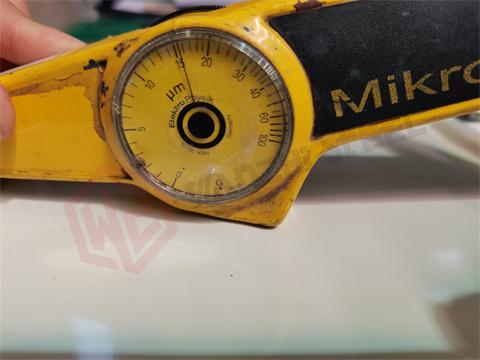
Magnetic Coating Thickness Gauge
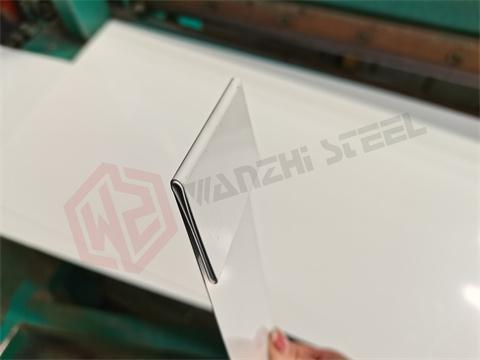
Bending Test
The T bending test aims to measure the flexibility of coating. The first step is to bend the sample around itself by 180° and then observe the cracking or peeling of the coating. And the minimum multiple values that will not cause paint cracking or peeling is the result of the test (denoted as nT ). T bending test evaluates the anti-cracking or anti-peeling ability of the coating when the sample is bent.
The hammer of the tester impacts the sample heavily so that the sample is rapidly deformed to form a convex area. Then check the coating in the impacted area to evaluate the resistance to cracking or peeling of the coating. There are 5 different levels.
L5: The coating has no peeling and cracking;
L4: The coating does not peel off, but there are cracks;
L3: The coating has tiny cracks;
L2: The coating has tiny peeling;
L1: The coating is peeled off on the bent area and impacted area.
L3, L4, and L5 are qualified products.
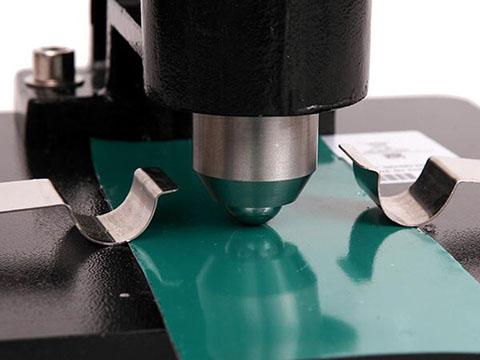
Impact Tester
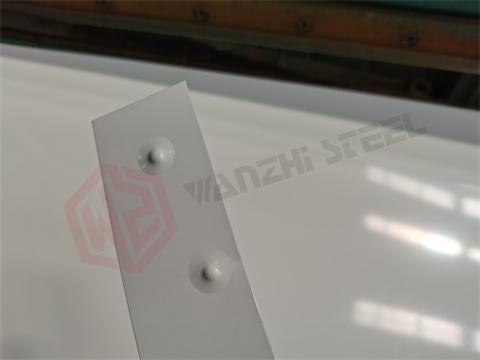
Impact Test
The pencil hardness test is designed to measure the hardness of the coating. It uses a set of pencils with a known hardness to plow the coating to measure the relative hardness of the coating. There are two methods: using the instrument and the manual method. In the instrumental test, the constant load of the scratch is (7.5+0.1) N, and the moving speed is 0.5 mm/s. If the pencil is pushed manually, the lead moves 6.5mm forward at 45° along the surface. The test starts with the hardest pencils and tests each pencil in turn until at least 4 pencils are found that cannot plow through the coating.
The cupping test also aims to evaluate the resistance to cracking or peeling of the coating. First, push the drift plug of the tester from the back of the sample at a constant speed to a specified depth. Then check if the coating is cracked or peeled off from the substrate. The cupping test is to evaluate the strength, elasticity, and adhesion of the coating with elongation of the substrate.
The cross-cut test is designed to evaluate the adhesion of the coating to the substrate. The first step is to cut through the coating to the substrate out a lattice pattern with a cross-hatch cutter. Then stick the tape on the cut area and tear it off to evaluate the adhesion of the coating according to the peeling area.
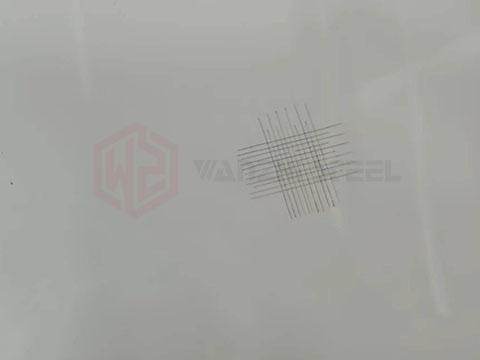
Cross-hatch Test Coating Surface
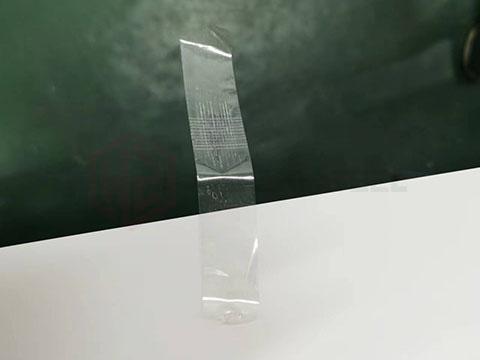
Cross-cut Test Result (Tape)
Generally, the test is usually performed using methyl ethyl ketone (MEK) as the solvent, so it is also called the MEK test. The test is carried out by rubbing the coating surface with a cotton cloth soaked with MEK until the coating is damaged.
The chemical resistance test is performed by entirely or partially immersing specimens into chemicals, then evaluating the discoloration, change in gloss, blistering, peeling, etc. It aims to evaluate the resistance of coatings to a series of chemicals, such as acids, alkalis, and salt.
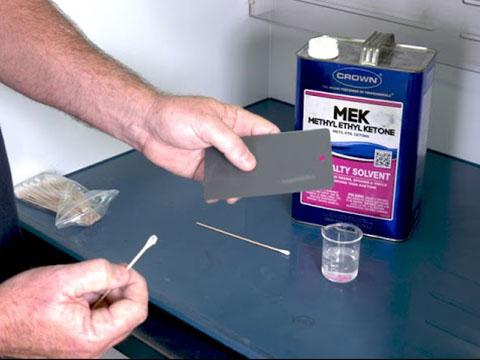
Solvent Resistance Test
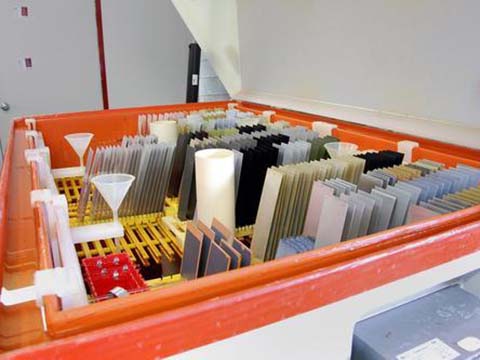
Salt Spray Test
The salt spray test is a popular corrosion test to check the corrosion resistance of metal materials and coatings. It is divided into natural environmental test and simulated environmental test. The apparatus for test consists of a testing chamber, where a salt water (5% NaCl) solution is atomized by a spray nozzle. The salt fog test ASTM B117-2011 standards are: salt solution concentration 5+1%, pH value 6.5~7.2, spray volume 1~2ml/80cm2-h, spray pressure 69~172 kPa, and chamber temperature 35 ± (1.1~1.7) °C.
The aging test includes natural aging test and accelerated aging test, such as xenon lamp aging test, ultraviolet lamp aging test, etc. The natural aging test is to evaluate the durability of the pre-painted sheet by placing them in different climatic environments for a long time. The xenon lamp aging test is to expose the sample to a xenon lamp, darkness, and water spray atmosphere. Then evaluate the discoloration, loss of gloss, and chalking of the coating. So does the UV lamp test, which is one of the most important means to test the UV aging resistance of the color-coated steel.
Appearance testing mainly checks the gloss and color difference of pre-painted steel by using a gloss meter and colorimeter.
Gloss refers to the reflectance ratio at which the surface of a coating film reflects the light projected on it. The greater the reflectance ratio, the higher the gloss. Generally, pre-painted steel is tested at an incident angle of 60° is often used. However, high-light products are measured at an incident angle of 20°. And low-light products are measured at an incident angle of 85°.
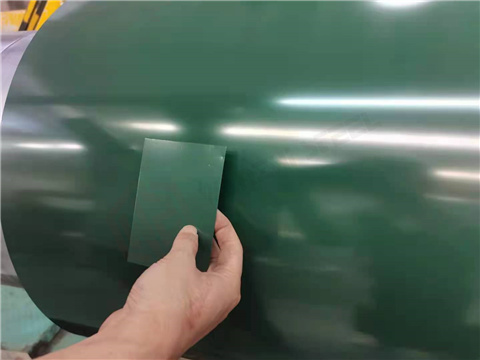
Comparison to RAL Card
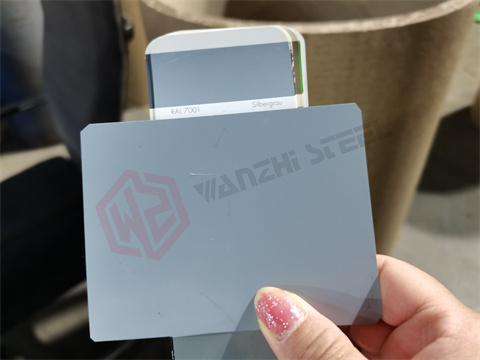
Color Test
The color difference between the sample and the reference sample can be quantitatively measured by comparing their spectral tristimulus values with a colorimeter or by visual colorimetry. During the test, the D65 light source, which simulates the light source of noon sunlight, is often used. The reference sample is generally provided or confirmed first by clients. The acceptable chromatic aberration values (ΔE) are less than 1.5 (chromatic) and 3.0 (achromatic). Visual colorimetry is more intuitive than colorimeters, but it is greatly influenced by subjective factors.
Prepainted steel is versatile in different industries. But different applications have different performance requirements. So it is better to choose suitable materials and coatings according to the applications and their specific requirements. These performance tests will help us check whether the color coated steel sheet is qualified or not. Wanzhi Steel is a trusted manufacturer of steel products, which has a strict quality control system and 20+ professional quality inspectors. More than that, third-party quality inspection is also acceptable. That’s why you can trust us. If you have any questions, please feel free to contact us!





